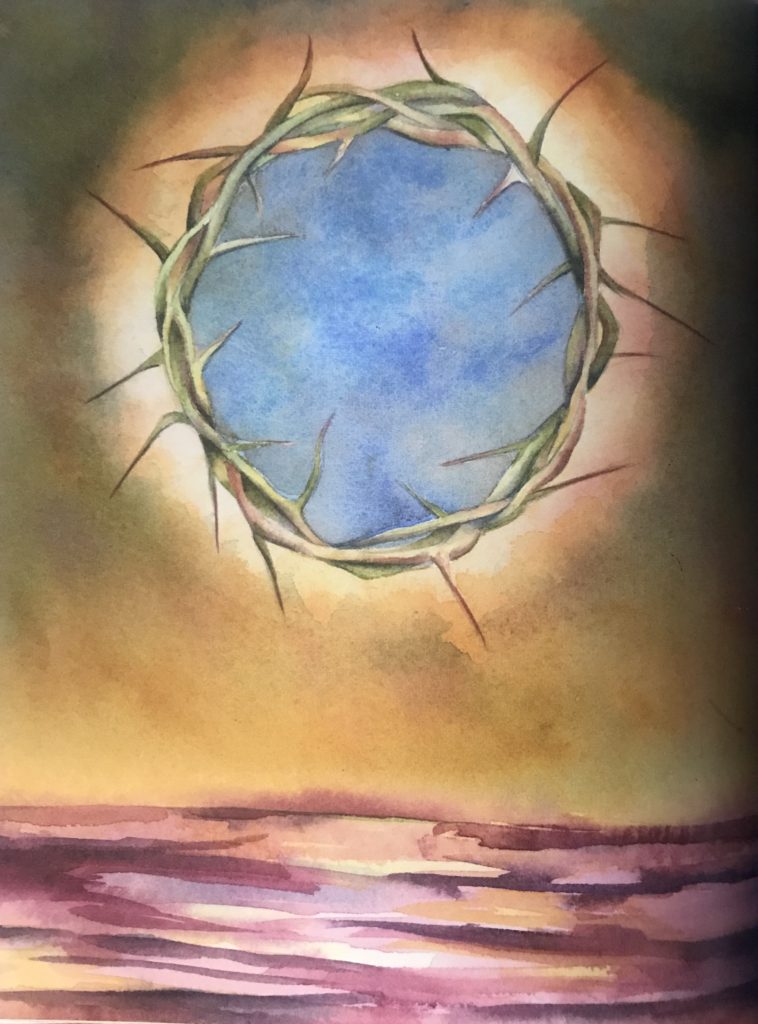
This was the first image Kathrin Burleson created for this project, and I find this interesting for a couple of reasons. First, the word she focuses on is, “humiliation,” and I’m not suggesting that any of these words are easy to sit with but this one conjures up the face I can’t stop from flushing, the tears I don’t want to fall, the dull ache in my stomach that points to a truth I didn’t want to get out, a truth I didn’t want to own, something about me isn’t good, isn’t right, isn’t OK.
Why in the world would you want to begin with that?
Second, Burleson begins in the middle of the story. To say that I am uncomfortable when things are out of order is like saying that probably hitting a hornets’ nest with a baseball bat and sticking around to see what happens is not a good idea. Order is my love language. Frankly, disorder equals humiliation, and I’m not interested in either, thank you very much.
Burleson writes a couple of things that intrigue me, though. First, she writes that she finds inspiration in the mundane or common; that it is in the basic – rinsing fruit for breakfast, zipping up a rain jacket on the 80th day of March, mud softening so that messy growth is everywhere, seeping onto the sidewalks and into our clothes – that beauty, the profound, and art come from. Burleson then suggest that the art we create from the common and the mundane allows for a new reality – that it “punches a hole in the sky.”
//
My youngest daughter, Harper, is the only person I know who can find four leaf clovers, and what’s a bit maddening is she’s not even looking for them. Finding magic in the mess, in the mundane, in the common, is her baseline. She once told me that her superpower is taking a small thing and turning it into something huge, and I agreed. (I can also relate.)
Once we moved to Ann Arbor, she didn’t find as many four-leaf clovers, but she did find a fairy village on 4th and William, and fairy doors in the libraries, at ice-cream shops and storefronts. Fairies were alive and well in her new hometown, and soon, in our backyard, at the foot of our fireplace mantel, and her bedroom.
Shoeboxes were houses, bottlecaps became sidewalks, tissues were bedspreads. All kinds of what the three of us declared as trash was to Harper, treasure. I often think putting Harper in a room with Marie Kando would be an award-winning reality TV show.
One afternoon, I spent a bit of time in her room – turned- fairy wonderland. At first glance, and many glances after that, Harper’s room is a mess. She sees no reason for dresser drawers, a laundry basket, or really, a trash can. It is very, very difficult to tell where imagination ends and reality begins for Harper. They are so intertwined that I think one cannot exist without the other.
The village Harper made was for the lost fairies, the one that wandered, and the ones that didn’t have a place to call home. Because of this, she’d written little notes next to the refrigerator, and the bathtub, for example, to let them know this place is for them. One note made it clear no payment was necessary but, if they felt so inclined to say thank you, “a little beauty is always appreciated.”
Isn’t that how it should be? Isn’t that what we’re called to do? Make those who are lost, who wander, who don’t have a home or feel at home comfortable for a time so that they can spread beauty into the world again?
In one home, Harper had cut a hole in what was the roof, and taped plastic wrap to it, then put the cardboard back. She let the fairies know that this was a magic cut-out wall, but not to worry because while it is not hidden, “non-dreamers will just see a skylight.” Those that can’t look beyond what is to what could be, those that don’t believe what is can make way for what could be, will stay where they are enjoying the view because it is afterall dangerous to break through glass.
But the world and all the magic it holds is waiting for all of us who dare to even so much as glance at the mess, who observe the mundane and the common, who punch a hole in the sky to make way for a new reality.
This is part of a five week series I am teaching at my church.

I love this! I think you should share your teaching here! I just watched a YouTube of the book with pictures it’s truly amazing
Callie I love your writing, always. And what you describe reminds me so much of my Madeleine … who is going on 17 and still holds the ability to be carelessly creative in such a special way ❤️